Introduction
Foldables out of China are going global left and right, aiming to challenge Samsung's dominance in the field, and the Honor Magic Vs is the latest to make its international debut. A second-gen foldable from Honor, the Magic Vs builds on the V from last year, adding refinement to the moving bits, improving the camera system, and tweaking the displays and battery.

We had an early look at the Magic Vs late last year, and while that unit was ready for prime time in terms of hardware, it wasn't final when it came to software. This one here is, so you'll be getting the usual test results, including battery life (spoiler: solid) and camera samples - we couldn't test those three months ago.
The Magic Vs is based on a 7.9-inch foldable OLED display that's still capped at 90Hz (Samsung's Z Fold4 can do 120Hz). It's now brighter than the V's, Honor says, as is the 6.45-inch cover display, which can refresh at up to 120Hz.
The folding mechanism is new on the Vs, compared to the V, with Honor abandoning gears in favor of a gearless hinge. Reducing the complexity as well as the adoption of magnesium and titanium alloys in the build has made the Vs some 10% lighter than the V - a most welcome development. That's with a larger battery than the older model too - 5,000mAh vs. 4,750mAh.
A couple of changes in the camera system make the Magic Vs a more capable cameraphone, we reckon. A telephoto camera replaces the 'ultra-spectrum' 50MP module on the Magic V that we never quite got to experience. It may be a relatively modest 8MP 3x unit, but some telephoto is better than no telephoto. The 54MP primary camera is new for this generation, too, while the 50MP ultrawide has been carried over. A couple of 16MP selfie cameras, one punch hole per display, bring the tally up to 5 cameras.
The Snapdragon 8+ Gen 1 ticks inside the Magic Vs, adding a plus over the Magic V's chipset. And in the months between the initial release in China and the global rollout Honor's put together an Android 13-based build of Magic UI (the one we had for the hands-on was on Android 12), so it's nicely current on the software front.
Honor Magic Vs specs at a glance:
- Body: 160.3x141.5x6.1mm, 267g/261g; Glass front, glass back or eco leather back, magnesium alloy frame, titanium alloy folding mechanism.
- Display: 7.9" Foldable OLED, 1B colors, 90Hz, HDR10+, 1984x2272px resolution, 10.3:9 aspect ratio, 382ppi; Cover display: OLED, 1B colors, 120Hz, HDR10+, 6.45", 1080x2560px, 431 ppi.
- Chipset: Qualcomm SM8475 Snapdragon 8+ Gen 1 (4 nm): Octa-core (1x3.0 GHz Cortex-X2 & 3x2.5 GHz Cortex-A710 & 4x1.80 GHz Cortex-A510); Adreno 730.
- Memory: 256GB 8GB RAM, 256GB 12GB RAM, 512GB 12GB RAM.
- OS/Software: Android 13, Magic UI 7.1.
- Rear camera: Wide (main): 54 MP, f/1.9, 27mm, 1/1.49", 1.0µm, PDAF; Ultra wide angle: 50 MP, f/2.0, 13mm, 122˚, AF; Telephoto: 8 MP, f/2.4, PDAF, 3x optical zoom, OIS.
- Front camera: 16 MP, f/2.5, (wide).
- Video capture: Rear camera: 4K@30/60fps (10-bit), 1080p@30/60fps, gyro-EIS, HDR10+; Front camera: 1080p@30fps, gyro-EIS.
- Battery: 5000mAh; 66W wired, 5W reverse wired.
- Misc: Fingerprint reader (side-mounted); NFC; Infrared port; stereo speakers.
Honor Magic Vs unboxing
The Magic Vs ships in a large black cardboard box with a fine striped pattern and a matte finish. Inside, the handset lies unfolded in a tray with the accessories in further boxes placed in dedicated compartments - a decidedly premium presentation, if not all that environmentally friendly.

The bundled peripherals include a 66W adapter to match the phone's specified charging capabilities and a cable to go with it.
Also inside the box is a protector for the back of the phone - the only surface that doesn't feature a display of some sort. It's a combined snap-on/sticker design - it will stay on without the adhesive strip, but the sticker provides an extra level of holding power, of course.
Design, build quality, handling
Nothing's changed between November and now in the Magic Vs' hardware, but there are plenty of changes coming from the Magic V, as we reported back then. But to make sure we have something new to say, Honor has sent us a Black review unit this time around - to compare and contrast against the Cyan we already had.

The glossy, mirror-like finish of the glass panel is about as welcoming to fingerprints as you'd expect - it's only pristine when you pull it out of the protective sleeve when taking it out of the box. Well, you could keep a microfiber cloth handy and wipe it periodically, but it's a tall order keeping it clean.

It's worth noting that if you do use it as a mirror (which is a viable use case), through the magic of your eyes' focusing magic you'll be seeing past the smudges and they will only be noticeable if you focus on them. In any case, the... case saves you from all of those woes, while also providing protection. It's got a soft faux leather layer so it's nicely premium feeling, too.
The Cyan colorway, meanwhile, has a shimmery frosted finish, so it's nowhere as prone to smudges, plus it's got a fresher look than a plain black back. Cyan or Black, the rear panel is made of glass.

There's a third colorway, Orange, and that's got a faux leather rear panel, making it 6g lighter than the 267g glass-backed versions. The international Magic Vs variant isn't getting it, however - it remains exclusive to China, apparently.

China-exclusive Orange colorway
Mentioning grams brings us to one of the key generational improvements - the entirely reworked hinge mechanism. Doing away with the geared design of the previous generation, the Vs comes with a gearless alternative, and Honor says the number of components has been reduced from 92 to just 4, which can't not involve some semantics and calling 'a component' what is essentially an assembly of several bits and bobs. Looking at the promo videos, there's a whole lot of stuff going on there.




Hinge bits: Old one (with gears) • New one
New materials have been adopted too, also contributing to weight savings. The inner screen's support structure is made of titanium, making it 20% lighter, while the magnesium alloy underside of the outer screen is 34% lighter than the previous aluminum solution. Those are Honor's numbers, and we won't be tearing down units and weighing any of these individually just to check, of course.

The hinge has been tested and rated for 400,000 actuations which is close to 11 years worth of 100 folds per day. We bet something else will croak before that, be it in the phone or yourself.
We can confirm that on both of our units, the hinge action feels reassuringly sturdy, with no weird noises or flexing in any direction.

The hinge allows the Magic Vs to remain in intermediate positions, possibly enabling use cases like a 'tripod mode' of sorts where you place the phone on a table and use it for long exposures or group photos with you in them. It's not entirely stable, however, and it will have a tendency to fully reopen if you start from the tablet state and you're at or slightly beyond the 90-degree angle.

On the opposite end of the hinge's travel, the phone folds flat in on itself, leaving no gap between the two halves. It's a common gripe we've had with several generations of Galaxy foldables and something that always comes up in comparisons, with only the Samsungs having a wedge shape when closed.
 Wedge-shaped Galaxy Z Fold4 (left) next to gapless Magic Vs
Wedge-shaped Galaxy Z Fold4 (left) next to gapless Magic Vs
The Magic is kept shut in its closed state by magnets, as is common practice. The Magic Vs is one of the less easy-to-open foldables due to the combination of those and the thin flat sides that leave no room for you to insert your fingertips and pry open the two halves. It's not an issue, strictly speaking, just a comparative observation.

After our recent experience with a couple of Oppo Find N2s (the regular one and the Flip), pretty much every other foldable feels like it has more of a crease along the bend line of the display, and the Magic Vs can't match the Oppos either. For what it's worth, its crease is less perceptible than the Galaxy's, but it's still there for you to see and feel until your brain inevitably learns to ignore it.

Similarly to the gap talk, there's also the usual IP rating talk - while the Galaxies don't fold entirely flat on themselves, they do offer an IPX8 rating for water resistance. The Magic can't claim such a feat. But it does have a gasket on its SIM card tray, so its innards aren't entirely exposed to the elements, at least not from there.

The controls around the Magic's perimeter are placed in somewhat of an unusual way. The fingerprint reader/power button combo is on the bottom/right half of the handset, around the midpoint. That much is what you'd call standard.

The volume rocker is above it, only it's on the other half - we're sort of used to having both on the same rail, next to each other, and it took some fiddling before we learned where the buttons are when we had to capture screenshots. Obviously, that's a non-issue if you're not changing phones every week, but it's just another observation.

In contrast, both speakers are on the top/left half of the handset. While in portrait orientation with the phone closed that's largely immaterial, in landscape orientation in the unfolded state, they'll either end up blocked if you're holding the now-tablet with the camera on top, or both will play unobstructed if you keep the camera half on the bottom. Perhaps switching will just come naturally if you feel you're blocking the sound.
Another thing you'll find on the top is an IR emitter - it's nice to have that remote control capability for legacy, non-connected devices like TVs and air conditioners. There's also a mic up around here, with less tangible utility, though you'll probably appreciate its cooperation when recording stereo audio in your videos and for noise cancellation in calls.


Speaker, IR emitter, and a mic up top • Speaker, USB-C port, card slot, and a mic on the bottom
Your pocket will need to accommodate the Magic Vs in its folded state, and in that case, it measures 160.3x72.6x12.9mm. It's taller and wider than the Galaxy Fold, but thinner, and it looks and feels even thinner than the numbers suggest, thanks to the lack of gap and the parallel surfaces.

It can be used a lot like a normal phone in its folded state, too, the 21:9 aspect of the cover screen being closer to convention than the 23.1:9 Galaxy. The current Fold4 is admittedly a step in the right direction from the even narrower 25:9 Fold3, but the Honor is still better in this respect than the latest Galaxy. And it's an overall larger display too, at 96cm2 compared to the 84cm2 of the Fold4, further reinforcing its superiority for 'regular smartphone' use cases.
 Magic Vs (left) next to Galaxy Z Fold4
Magic Vs (left) next to Galaxy Z Fold4
For tablet use cases, the Honor also offers a larger viewing area, if not quite by as much. The 7.9-inch display of the Magic Vs comes in at 199.5cm2, compared to the 'tiny' 7.6-inch unit of the Galaxy and its 183.2cm2. To be fair, the difference isn't huge, but what's really welcome is the fact that you're getting more screen estate without having to accept a weight penalty.
 Magic Vs (left) next to Galaxy Z Fold4
Magic Vs (left) next to Galaxy Z Fold490Hz inside, 120Hz on the front, nits aplenty
A foldable is all about the bendy display inside and the one on the Magic Vs isn't half bad. A 7.9-inch OLED, it's got a 1,984x2,272px resolution in a 10.3:9 aspect ratio (382ppi pixel density). Refresh rate is a bit of blemish in the specsheet - it maxes out at 90Hz, which is a notch below the 120Hz capability of the likes of Galaxy Z Fold4, Mix Fold 2 or the Oppo Find N2.

The Magic Vs' outer display, on the other hand, does refresh up to 120 times a second - same as all the others. With an aspect ratio of 21:9 and a 6.45-inch diagonal, it offers a size advantage over the Find (5.54"), as well as better proportions than the Galaxy (23.1:9), though you could say the Mix Fold 2 wins on both counts here (6.56", 21:9).

Both displays feature 1920Hz pulse-width modulation for brightness control, so they should look flicker-free to even the most flicker-sensitive eyes. 10-bit color and HDR10+ support are also on both spec sheets.
We measured a maximum brightness of 594nits on the internal display when adjusting the slider ourselves, with a healthy boost to 876nits when we placed the unfolded Magic under bright light - the increase is there whether you have the Adaptive brightness on or not.
Those aren't record-breaking numbers - the Galaxy Z Fold4 maxes out at 1000nits, the Mix Fold 2 can do 1054nits, while the Find N2 shines as bright as 1216nits. Still, we wouldn't say the Magic's results are bad; it's just that the others can be a bit brighter. For what it's worth, the Honor is substantially brighter than the somewhat related Mate X2 and Mate Xs 2.
| Display test | 100% brightness | ||
| Black, |
White, |
||
| 0 | 594 | ∞ | |
| 0 | 876 | ∞ | |
| 0 | 505 | ∞ | |
| 0 | 809 | ∞ | |
| 0 | 1000 | ∞ | |
| 0 | 522 | ∞ | |
| 0 | 1054 | ∞ | |
| 0 | 502 | ∞ | |
| 0 | 1216 | ∞ | |
| 0 | 506 | ∞ | |
| 0 | 469 | ∞ | |
| 0 | 542 | ∞ | |
There are no excuses to be made on the cover display. We got 1287nits under bright ambient light, which is a class-leading result, by some margin. The 549nits in 'regular' conditions is about what you can expect from any OLED, pretty much.
| Display test | 100% brightness | ||
| Black, |
White, |
||
| 0 | 549 | ∞ | |
| 0 | 1287 | ∞ | |
| 0 | 486 | ∞ | |
| 0 | 802 | ∞ | |
| 0 | 1034 | ∞ | |
| 0 | 501 | ∞ | |
| 0 | 940 | ∞ | |
| 0 | 487 | ∞ | |
| 0 | 967 | ∞ | |
| 0 | 514 | ∞ | |
| 0 | 725 | ∞ | |
| 0 | 472 | ∞ | |
| 0 | 601 | ∞ | |
| 0 | 517 | ∞ | |
| 0 | 831 | ∞ | |
| 0 | 1274 | ∞ | |
| 0 | 828 | ∞ | |
| 0 | 1760 | ∞ | |
The Magic Vs has two modes in its Color mode menu, with additional Warm and Cold bias presets as well as a color temperature wheel for custom tweaking.
In the default Vivid mode, on the internal screen, we got wide color gamut and better-than-average color accuracy for our DCI-P3 test swatches with a relatively minor blue shift. The Warm preset gently shifted things towards green, but wasn't better or worse going by the numbers. The Normal mode is tailored for sRGB content and we recorded excellent color accuracy for the sRGB patterns.
The results were similar on the cover display in Vivid mode, with only a slight drop in color accuracy in Normal mode. Overall, respectable color accuracy performance from both panels.

The Magic's advertised HDR10+ compliance is confirmed by hardware-checking apps, and we did get HDR streams in YouTube. Netflix wasn't as cooperative, though this could very well change once the phone hits the market and the streaming service whitelists it. Even as is, we got FullHD streaming in Netflix thanks to the Widevine L1 certification.

The refresh rate menu gives you a total of four options. Standard limits things to 60Hz, while medium sets the cap at 90Hz for both displays. High is what will get you 90Hz on the internal screen and 120Hz on the cover display. In most situations these are hard settings - there is no activity-based downswitching.
Dynamic mode is something inbetween Medium and High, in that it will keep things at 90Hz most of the time, but will bump to 120Hz on the cover screen for some applications. It still won't switch to 60Hz when idling.
Dynamic mode will be more inclined to switch down to a lower refresh rate once you go inside an app - browsers, in particular, get capped at 60Hz in Dynamic mode, but get the full possible refresh rate for each screen when in High.
Additionally, and that deserves some praise, the Magic Vs unlocks the refresh rate for games that support high frame rates, and in High mode, you're getting each screen's maximum refresh rate.
Honor Magic Vs battery life
The Magic Vs runs off of a 5,000mAh battery - the largest capacity of all current foldables - the other large ones are in the 4,500mAh ballpark. Admittedly, a couple of larger-screen options do exist (the Mix Fold 2, and the two-year-old Mate X2), but the Honor's bendy display is bigger than those on the Galaxy and the Find, so the extra mAhs wouldn't hurt.
In our testing, we measured 11:33h of Wi-Fi web browsing on the large display with the phone running at a constant 120Hz. In video playback, we clocked 14:20h, this time at a fixed 60Hz refresh rate. The call time was solid too, at 31:24h. Factoring in a mostly average standby draw, the Magic Vs' Endurance rating worked out to 85h.
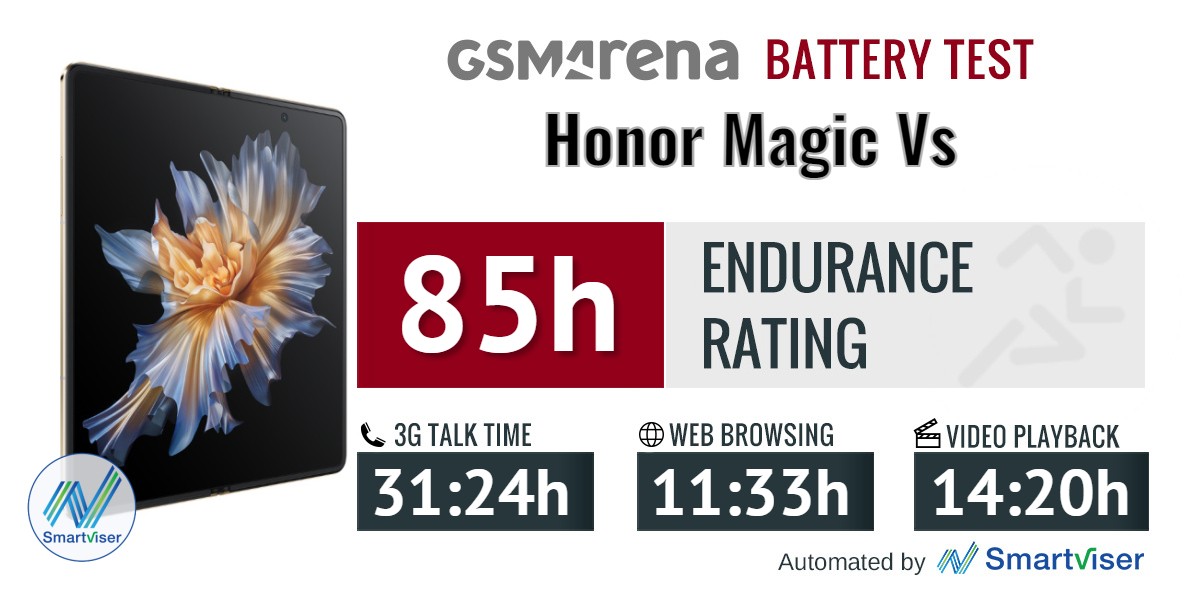
Our battery tests were automated thanks to SmartViser, using its viSerDevice app. The endurance rating denotes how long the battery charge will last you if you use the device for an hour of telephony, web browsing, and video playback daily. More details can be found here.
Video test carried out in 60Hz refresh rate mode whenever possible. Web browsing test done at the display's highest refresh rate whenever possible. Refer to the respective reviews for specifics. To adjust the endurance rating formula to match your own usage - check out our all-time battery test results chart.
We ran the screen-on tests on the cover display, and we got 15:55h on our web browsing script and 20:37h of looping our test video - again, at 120Hz and 60Hz respectively. Better than average results for the Honor there.
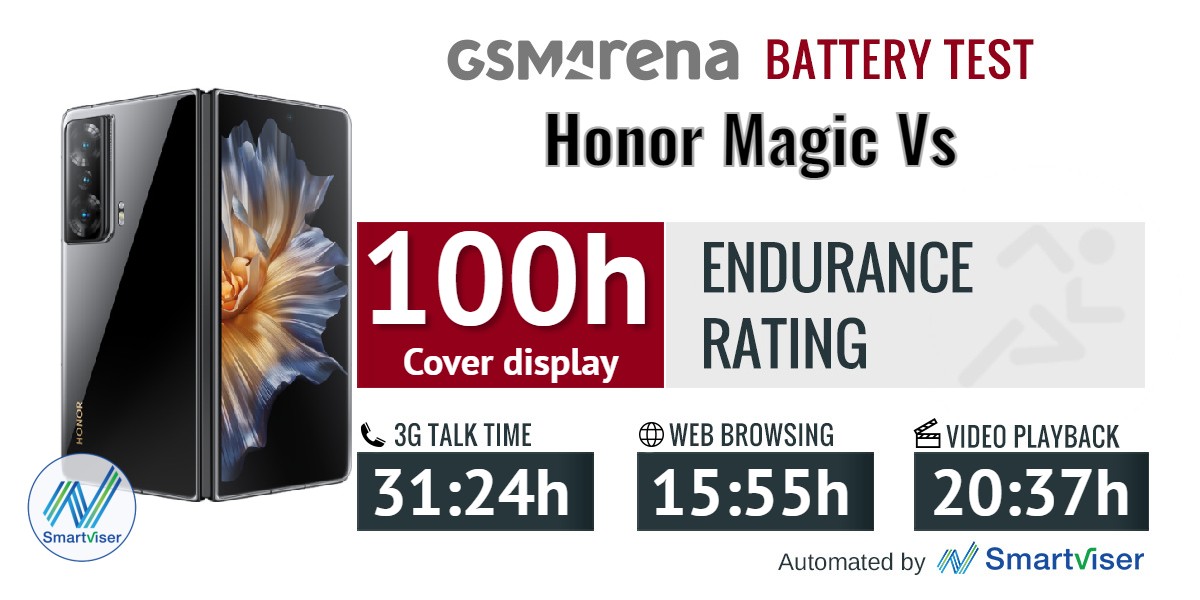
Charging speed
The Magic Vs is rated for 66W charging and comes with a 66W adapter badged Honor SuperCharge.

Using that adapter, we clocked 50 minutes from empty to 100%, and we were looking at 85% 30 minutes into the process (50% in the first 15 minutes too). We haven't yet tested Honor's just announced Magic5 Pro, but the Magic4 Pro takes 30 minutes from flat to full, so the foldable can't quite match it.
The Magic Vs does compare favorably with its bendy peers though, particularly in the first half hour. Naturally, the Galaxy Z Fold4 doesn't look good in charging speed comparisons.
There's no wireless charging on the Magic Vs, unfortunately. That only leaves the Galaxy foldables and a couple of vivo X Folds that support it, after the Find N2 dropped it too.
Speaker test
The Magic Vs' speaker system consists of two units, one on each end of the handset's top half (when folded). The top speaker outputs through a grille in the frame as well as through an earpiece slit, so it serves double duty.
A bit unusually, the top speaker gets the right channel when you're holding the Magic in portrait orientation, be it in phone or tablet mode - most other implementations assign the left channel to the top speaker. In landscape, the phone will send the correct channel to each speaker to match the orientation of the phone in space. In any case, either speaker will also output some of the opposite channel's sound at a much lower volume.
In our testing, the Magic Vs earned a 'Very Good' rating for loudness, making it the loudest of the large-sized foldables and louder than most phones in general too. We'd also say the Magic sounds better than the rest of its kind, with only the Mate Xs 2 delivering better bass and only slightly cleaner vocals.
Use the Playback controls to listen to the phone sample recordings (best use headphones). We measure the average loudness of the speakers in LUFS. A lower absolute value means a louder sound. A look at the frequency response chart will tell you how far off the ideal "0db" flat line is the reproduction of the bass, treble, and mid frequencies. You can add more phones to compare how they differ. The scores and ratings are not comparable with our older loudspeaker test. Learn more about how we test here.
Android 13 with Magic OS 7.1 on top
The Honor Magic Vs we have here runs an in-house MagicOS 7.1 on top of an Android 13 core. And it's a fully functional Android 13, including full support for the Google apps suite, unlike Huawei's software builds which are limited in one way or another.

You may note that Honor has renamed its Android overlay from UI to OS with this v7 in an attempt to break away from its Huawei EMUI roots. A lot has been shared over the years between Magic OS (or UI) and EMUI and traces of that common past remain so if you've used a moderately recent Huawei phone you'd be right at home, but differences do exist. Naturally, if and where the two differ, the Magic Vs is in line with Honor's own latest non-bendy models, even if they may still be on previous Magic versions.

Going from UI 6 to OS 7, we're seeing subtle changes here or there, but the overall look and feel of the Magic overlay remain the same. Iconography is largely unchanged, the task switcher and notification/quick settings are is the same too (and that's one area where the latest EMUI and its Control center differs), the Settings menu doesn't look one bit different either.






MagicOS 7 basics: Homescreen • Task Switcher • Notifications • Quick settings • Settings menu
Also available here is previously introduced functionality like large folders and the card bar that sits under app icons to indicate that the app supports cards (another name for the in-house widgets).
Speaking of widgets, some neat EMUI features are nowhere to be found on the Magic Vs' Magic OS like the widget stacking or the combined widgets.
A Yoyo suggestions card/widget lets you have the onboard assistant pitch apps that it things you might be inclined to use based on previous experience.






Large folders • Large folders • Large folders • Cards
Naturally, a host of customization options are there for you to explore as well. You've got a wide selection of themes, Always-on display styles, the lot. What's missing at this point is the option to enable an app drawer - all the newly installed apps get dumped on your homescreens.
There's split screen multi-window on the cover display, as well as pop-up window mode for some in-house and third-party apps. You can only have one pop-up app open at a time and subsequent ones end up in a separate task switcher.






Multi-tasking on the cover screen
You'd like be multi-windowing on the internal display more often than not, we reckon. You get a fairly narrow range of resizing options, but you do get to have a horizontal split as well, though Chrome for example doesn't support it.





Multi-tasking on the main screen

Weirdly enough, there's not a whole lot of foldable-related functionality. Sure, YouTube will switch to that interface where it shows the video in the top half and the comments on the bottom if you half-fold the Magic Vs, but that's about it - there are no clever camera UI tricks for waist level shooting or tripod mode.

There aren't a ton of settings either. Basically, you can choose whether the Magic will lock itself when you close it, or just move whatever you were doing to the cover display. It will remind you constantly that some apps may not function properly after the handoff and may need restarting, which is at least mildly annoying.
The other available setting is what aspect ratio apps will use - 16:9, 4:3, or the full screen. You can also set this in the initial seconds after you launch an app in the default pillarboxed state when you get a blue icon in the bottom right corner.
An app extender feature that lets you have two instances of the same app is also tucked into the 'Foldable phones' menu, but that's hardly a foldable-related feature.




Not a lot of foldable features
Performance and benchmarks
The Magic Vs' specsheet lists the Snapdragon 8+ Gen 1 at its heart. Sure, it's not the current Gen 2, but it's an easily powerful enough platform - it's the flagship chipset for 2022, after all.
Now, there's this peculiar detail in the specs when it comes to CPU clock frequency - Honor lists the numbers as 3.00GHz for the Cortex-X2 super-powerful core, 2.50GHz for the mid-tier cluster of 3x Cortex-A710s and 1.80GHz for the efficiency-oriented 4x Cortex-A510s.

If you're into the habit of remembering pointless numbers and you're following the smartphone industry, you'll note that the frequencies are the same as on the CPU of the Snapdragon 8 Gen 1 (non-plus). And since the clock rates of the X2 and the A710 cores are among the key differences separating the plus from non-plus varieties of the SD 8 Gen 1, just how plus is the one in the Magic Vs?
Anyway, the international version of the Honor foldable comes with 12GB of RAM and 512GB of storage. China also gets lesser 12GB/256GB and 8GB/256GB options.
Things are off to a slow start in the single-core portion of GeekBench 5 where the Vs' Cortex-X2 isn't living up to its full potential. The SD 8 Gen 1-equipped Magic4 Pro posts higher scores as do a bunch of other pluses and non-pluses. Somewhat noteworthy is the Galaxy Z Fold4's 30% advantage in this test.
GeekBench 5 (single-core)
Higher is better
- Galaxy S23 Ultra
1537 - Xiaomi 13 Pro
1490 - Xiaomi Mix Fold 2
1374 - Galaxy Z Fold4
1337 - Xiaomi 12S Ultra
1324 - Huawei Mate 50 Pro
1277 - ZTE Axon 40 Ultra
1207 - OnePlus 11
1150 - Honor Magic4 Pro
1127 - Oppo Find N2
1057 - Honor Magic Vs
1033 - OnePlus 10 Pro
975 - Huawei Mate X2
956 - Huawei Mate Xs 2 (Unfolded)
884
The Magic does level things off with the Galaxy in the multi-core test, so not all is lost. It's looking a lot more competitive overall here as well - not SD 8 Gen 2 level, but more in line with what you'd expect from the chip inside it.
GeekBench 5 (multi-core)
Higher is better
- Xiaomi 13 Pro
5087 - Galaxy S23 Ultra
4927 - OnePlus 11
4899 - Xiaomi Mix Fold 2
4368 - Xiaomi 12S Ultra
4300 - Galaxy Z Fold4
3981 - Honor Magic Vs
3971 - Huawei Mate 50 Pro
3839 - Oppo Find N2
3670 - Honor Magic4 Pro
3512 - OnePlus 10 Pro
3447 - Huawei Mate X2
3389 - ZTE Axon 40 Ultra
3189 - Huawei Mate Xs 2 (Unfolded)
3131
But then comes Antutu to put a stop on that momentum, placing the Magic Vs at the bottom of the pack.
AnTuTu 9
Higher is better
- Xiaomi 13 Pro
1281666 - Galaxy S23 Ultra
1241531 - OnePlus 11
1140661 - Xiaomi Mix Fold 2
1050139 - Xiaomi 12S Ultra
1039412 - Honor Magic4 Pro
980755 - Huawei Mate 50 Pro
979921 - Galaxy Z Fold4
964530 - Oppo Find N2
962082 - OnePlus 10 Pro
886248 - ZTE Axon 40 Ultra
884923 - Honor Magic Vs
831175 - Huawei Mate Xs 2 (Unfolded)
641608
There are no surprises in offscreen benchmarks, where the Magic Vs posts numbers on par with the other similarly equipped devices in the class. If anything, it leads the SD 8(+) Gen 1, though the differences are minimal.
3DMark Wild Life Vulkan 1.1 (offscreen 1440p)
Higher is better
- Galaxy S23 Ultra
12241 - Honor Magic Vs
10561 - Xiaomi 12S Ultra
10533 - Oppo Find N2
10517 - Huawei Mate 50 Pro
10468 - Galaxy Z Fold4
10382 - Xiaomi 13 Pro
10289 - Honor Magic4 Pro
10183 - OnePlus 10 Pro
9610 - ZTE Axon 40 Ultra
8670 - Huawei Mate Xs 2 (Unfolded)
5830 - Huawei Mate X2
5693
3DMark Wild Life Extreme (offscreen 1440p)
Higher is better
- Galaxy S23 Ultra
3790 - OnePlus 11
3594 - Xiaomi 13 Pro
2939 - Oppo Find N2
2823 - Honor Magic Vs
2801 - Huawei Mate 50 Pro
2753
GFX Aztek ES 3.1 High (offscreen 1440p)
Higher is better
- Xiaomi 13 Pro
61 - OnePlus 11
61 - Galaxy S23 Ultra
59 - Honor Magic Vs
46 - Oppo Find N2
46 - Xiaomi 12S Ultra
46 - Galaxy Z Fold4
45 - Xiaomi Mix Fold 2
45 - Huawei Mate 50 Pro
45 - OnePlus 10 Pro
43 - Honor Magic4 Pro
40 - ZTE Axon 40 Ultra
35 - Huawei Mate X2
29 - Huawei Mate Xs 2 (Unfolded)
28
GFX Aztek Vulkan High (offscreen 1440p)
Higher is better
- Galaxy S23 Ultra
69 - OnePlus 11
68 - Xiaomi 13 Pro
67 - Honor Magic Vs
51 - Oppo Find N2
51 - Huawei Mate 50 Pro
51 - Xiaomi 12S Ultra
51 - Galaxy Z Fold4
50 - Xiaomi Mix Fold 2
50 - OnePlus 10 Pro
48 - ZTE Axon 40 Ultra
42 - Honor Magic4 Pro
32 - Huawei Mate Xs 2 (Unfolded)
31 - Huawei Mate X2
31
GFX Car Chase ES 3.1 (offscreen 1080p)
Higher is better
- Xiaomi 13 Pro
127 - Galaxy S23 Ultra
126 - OnePlus 11
126 - Oppo Find N2
104 - Xiaomi 12S Ultra
104 - Honor Magic Vs
103 - Galaxy Z Fold4
102 - Xiaomi Mix Fold 2
101 - Huawei Mate 50 Pro
101 - OnePlus 10 Pro
97 - ZTE Axon 40 Ultra
80 - Huawei Mate Xs 2 (Unfolded)
72 - Honor Magic4 Pro
72 - Huawei Mate X2
61
GFX Manhattan ES 3.1 (offscreen 1080p)
Higher is better
- Xiaomi 13 Pro
222 - OnePlus 11
220 - Galaxy S23 Ultra
212 - Xiaomi 12S Ultra
182 - Honor Magic Vs
180 - Oppo Find N2
180 - Xiaomi Mix Fold 2
178 - Huawei Mate 50 Pro
178 - OnePlus 10 Pro
175 - Galaxy Z Fold4
174 - Huawei Mate Xs 2 (Unfolded)
121 - Honor Magic4 Pro
117 - ZTE Axon 40 Ultra
114 - Huawei Mate X2
100
The onscreen tests introduce actual rendering resolution as a variable between devices and the Magic Vs has the highest-res screen of the foldables, so it's once again dropping towards the bottom of the charts.
GFX Aztek ES 3.1 High (onscreen)
Higher is better
- Galaxy S23 Ultra
54 - Huawei Mate 50 Pro
52 - Oppo Find N2
49 - Xiaomi 13 Pro
49 - OnePlus 11
49 - ZTE Axon 40 Ultra
46 - Galaxy Z Fold4
43 - Xiaomi Mix Fold 2
40 - Honor Magic4 Pro
40 - Xiaomi 12S Ultra
38 - OnePlus 10 Pro
37 - Honor Magic Vs
36 - Huawei Mate X2
20 - Huawei Mate Xs 2 (Unfolded)
19
GFX Aztek Vulkan High (onscreen)
Higher is better
- Galaxy S23 Ultra
60 - Huawei Mate 50 Pro
55 - OnePlus 11
53 - Oppo Find N2
52 - Xiaomi 13 Pro
52 - ZTE Axon 40 Ultra
45 - Honor Magic4 Pro
45 - Galaxy Z Fold4
42 - Xiaomi Mix Fold 2
41 - OnePlus 10 Pro
41 - Xiaomi 12S Ultra
39 - Honor Magic Vs
38 - Huawei Mate Xs 2 (Unfolded)
21 - Huawei Mate X2
12
GFX Car Chase ES 3.1 (onscreen)
Higher is better
- Huawei Mate 50 Pro
68 - Galaxy S23 Ultra
67 - Xiaomi 13 Pro
64 - Galaxy Z Fold4
59 - Oppo Find N2
59 - Honor Magic4 Pro
59 - ZTE Axon 40 Ultra
58 - OnePlus 11
57 - Xiaomi Mix Fold 2
52 - Xiaomi 12S Ultra
51 - Honor Magic Vs
50 - OnePlus 10 Pro
48 - Huawei Mate X2
29 - Huawei Mate Xs 2 (Unfolded)
28
GFX Manhattan ES 3.1 (onscreen)
Higher is better
- Huawei Mate 50 Pro
113 - Galaxy S23 Ultra
112 - ZTE Axon 40 Ultra
105 - Xiaomi 13 Pro
103 - Honor Magic4 Pro
100 - Galaxy Z Fold4
93 - Xiaomi Mix Fold 2
93 - Xiaomi 12S Ultra
91 - OnePlus 10 Pro
89 - Honor Magic Vs
82 - Oppo Find N2
60 - OnePlus 11
60 - Huawei Mate Xs 2 (Unfolded)
45 - Huawei Mate X2
40
Sustained performance is actually pretty great on the Magic Vs. In the hour-long run of the CPU throttling test, the Honor settled at around 85% of peak performance, a level it seemed to be able to maintain indefinitely.
In the Wild Life Stress test it did drop to 55% of initial performance but it did so with a rather unusual curve, where it was only the last loop of the benchmark that was this low. Otherwise it kept things at around 70% of peak performance for about 15 minute. Not a groundbreaking result but solid overall.
Triple camera setup on the back, missed UI opportunities
The Magic Vs has three cameras on its back in a rather conventional in principle ultrawide-wide-telephoto configuration. Two selfie cameras, one per display, bring the tally up to five.

The main camera uses the 54MP Sony IMX 800 sensor. It's got a 1/1.49" optical format and a 1.0µm pixel size. The unusual optical format comes from the similarly unorthodox native resolution of 8,768x6144px which is in an odd 1.43:1 aspect ratio (4.28:3 or 12.8:9, depending on how your brain is wired). The 4-to-1 binned photos do come from a 4:3 aspect crop from that imager and weigh in at 4,096x3,072px for a total of 12.5MP.
There's a non-stabilized lens in front of that sensor and the EXIF data on the full-res images reports 23mm equivalent focal length vs. 27mm on the cropped 12.5MP ones, though the 1.04x crop factor isn't enough to make all the numbers make sense all at the same time. But we digress. The aperture is f/1.9.

The ultrawide camera is based on an undisclosed 50MP sensor with unknown optical format. Honor lists its coverage at 122 degrees, and while we can't confirm that number, we can definitely say that it's very wide, wider than most. Not only does it cover a lot, the lens can also focus far and near, enabling a 'macro' mode on top of its overall better usefulness for general shots of nearby subjects.
There's also a telephoto camera, offering 3x optical zoom and 8MP resolution. This one does have OIS. The equivalent focal length embedded in the image data is 81mm and the aperture is f/2.4.
The two identical selfie cameras have 16MP sensors and f/2.45 aperture 24mm-equivalent lenses with fixed focus.

Setting aside for a bit the fact that this is a foldable, the camera app is no different than any other when it comes to the fundamentals. The most commonly used modes arranged in a carousel formation and you can switch between them by swiping left and right. There's a More button that reveals a handful of extra modes, which can be arranged to your liking in that More pane - you can't move any of those to the main carousel, which in turn can't be re-arranged either. The Pro photo mode lets you tinker with ISO, focus, white balance, exposure compensation and shutter speed. The wheel at the top-right corner of the viewfinder is for the general camera settings of which there aren't a whole lot.
Now circling back to that foldable form factor and the camera functionality that goes with it and, well, there isn't a whole lot either. Basically, all you can do is enable a live preview on the cover display for your subjects to know how they're going to look. There's no nifty waist level shooting UI and there's no split-screen view with a film strip of already taken shots to one side.
In fact, if you're to try and use the Magic Vs in an improvised 'tripod' mode, the shutter release button ends up right in the crease of the display. And if you fold the handset past a certain angle, the phone will switch to the cover display, which is now lying on the table and you can't see it or press the shutter release.

But perhaps most disappointingly, there's no option to move the UI on the cover display and control the camera from there - it's just a non-actionable viewfinder. The implications of this are multiple, none of them positive.
For one, there's no easy way to actually capture a photo. There's an option for palm shutter release, and it's right there in the settings menu, only it's explicitly limited to the selfie camera, so that's a no. You could try and squeeze the volume rocker, but you will be covering the preview with your hand thus negating the benefit of having it, plus do you really want to be awkwardly stretching your palm and risking dropping your €1600 Magic?

The most sensible option in our view is to use a Bluetooth release (how we captured our samples), but that's a separate device to carry around, and it doesn't solve the issue that you still have a full-screen active camera UI on the back which you can accidentally touch and switch modes or whatnot.
Admittedly, a lot of these complaints we've already had with other foldables before, but they've been subsequently addressed on most if not all of them. It's not like foldables are a novelty anymore, plus the Magic Vs is Honor's second iteration, so such things should have been ironed out.
Daylight photo quality
The Magic Vs' main camera captures very good photos. Colors are expressive without looking overdone, while the nicely high contrast in combination with the good dynamic range make for a likeable level of pop and well developed tonal extremes. Detail is good and you can say it's presented in a balanced way - it's not the most natural rendition, but it's not overly processed either. There's little to speak of in the way of noise - there's just the finest of grittiness here or there if you go looking for it.
















Daylight samples, main camera (1x)
As we mentioned earlier, the full-res 54MP mode saves in the native field of view, equivalent to a 23mm lens, so it does get a bit more in the frame. That's perhaps it most significant advantage, since it doesn't really get you a meaningful detail improvement. Then again, there aren't penalties to be paid in other areas like colors an dynamic range, so shooting in 54MP and then downscaling is a viable path towards 13.5MP 23mm pictures.








Daylight samples, main camera (1x), 54MP
The 8MP telephoto camera may not sound like much, but it does take solid photos. Detail is very good and there's no noise. Color reproduction and dynamic range leave nothing to be desired either.







Daylight samples, telephoto camera (3x)
There's a 10x button in the zoom selector, but the results are too soft. Then again, those could pass as usable in a pinch, if you refrain from pixel-peeping.




Daylight samples, telephoto camera (10x)
The utlrawide camera doesn't disappoint either. Its wider-than-most coverage combined with autofocusing capability makes it one of the more versatile shooters of its kind. It also helps that it delivers sharpness across the frame and excellent detail. It does suffer from some relatively visible purple fringing, but that's hardly exclusive to this ultrawide in particular. Once again, color reproduction and dynamic range are hard to fault.










Daylight samples, ultrawide camera
The 50MP mode is leaving us underwhelmed again. And since there's no coverage difference between 12.5MP and 50MP modes this time around (unlike on the main camera), there's little point in shooting at nominal resolution.








Daylight samples, ultrawide camera, 50MP
Low-light photo quality
The Magic Vs does the usual auto Night mode action in Photo mode and there's no setting for turning it off. And even if the two modes have different UI clues as to what is happening, the process takes the same amount of time either way. That behavior got us essentially the same shots in both modes in all but the second scene below, where we got harsher highlight rendition in Photo mode - an outlier more than anything else.
Other than that, you can expect balanced exposures with good highlight detail retention and well developed shadows, though we'd say the Magic leans towards a darker, more true-to-life presentation than an overtly Night-mode-like brightening of the scene. Colors maintain a good level of saturation and we observed no white balancing blunders, even in mixed street lighting.
Noise is minimal and detail is good, though some of the lower midtones can be a little softer than ideal - like the wall in the distance in the third sample. Even so, solid showing from the main camera.
s







Low-light samples, main camera (1x)








Low-light samples, main camera (1x), Night mode
The telephoto's approach to low-light shooting is the same too - there's no appreciable difference between Photo mode and Night mode results. We're getting excellent exposures and dynamic range here as well, with similarly great color rendition. Closer inspection reveals a good level of detail, albeit not quite as sharp as during the day.








Low-light samples, telephoto camera (3x)








Low-light samples, telephoto camera (3x), Night mode
A bit more of the same follows on the ultrawide end of the zoom range. That is to say, there's no difference between Photo and Night mode and the end results are well exposed images with excellent dynamic range. The ultrawide does tend to introduce some extra warmth when faced with certain types of light, but it's not the worst offender. Detail is good, noise is next to non-existent.







Low-light samples, ultrawide camera (0.6x)







Low-light samples, ultrawide camera (0.6x), Night mode
Once you're done with the real world samples, head over to our Photo compare tool to see how the Honor Magic Vs stacks up against the competition.



Honor Magic Vs against the Galaxy Z Fold4 and the Oppo Find N2 in our Photo compare tool
Portrait mode
Portrait mode on the Magic Vs uses the main camera for image capture but it does give you 1x and 2x zoom levels to choose from. Subject detection is mostly good, though the Honor did fail the wood wall panelling test, which has historically been the norm, but we've seen more and more phones nail it. There's also the matter that the default blur level is a bit excessive and more readily reveals the artificial nature of the shot than we'd like.
The 2x zoom level makes for a better perspective and more comfortable shooting distance. The trade off is the reduced sharpness, though you could live with it for fit-to-screen purposes or sharing on the socials.
Selfies
The Magic Vs has two identical selfie cameras, one per display. They capture okay 16MP shots with good (if not pin-sharp) detail and low noise. Dynamic range is decent and skin tones are pleasing though colors overall aren't quite as vivid as we'd like.
The realtive awkwardness of shooting selfies single-handed with a tablet might result in more shaky results when operating the Magic unfolded, mind you.




Selfie samples, cover selfie camera




Selfie samples, inner selfie camera
We normally like to make a point on foldables that with the device open, you can use the rear cameras for selfies and frame on the cover screen, and get better results that way. On the Magic Vs that's only sort of an option, as mentioned in the camera UI section, but we still persevered and captured some images that way as well.
The main camera shots are undoubtedly better in every respect. You get crisper detail, livelier colors, wider dynamic range, plus some natural background separation. Makes it all the more disapointing that actually capturing these takes so much effort.




Selfie samples, main rear camera
The ultrawide is also available for selfies though its extreme field of view makes arm's length shots contain a whole lot of arm.
You'll likely want to use it for some unusual angles, which presented a problem in our experience. Getting to focus on a face positioned towards the edge of the frame requires you to tap on that face - for some reason it wouldn't automatically lock focus on face that's not in the middle.
That would be all fine and dandy if you could do it on the cover screen facing you, but that's just a viewfinder with no actionable interface. That one shot below took multiple tries to focus blindly on the internal screen (on top of the Bluetooth shutter release we used to capture all of these in the first place). All the others seem to have gotten this right already.




Selfie samples, ultrawide rear camera
Closeups
The Magic Vs will automatically switch to a zoomed in view from the ultrawide camera when you position yourself too close to your subject for the main camera to focus - a behavior that can't be disabled. That effectively lets you shoot closeups in Photo mode.
In addition to that, the phone also features a Super Macro mode. That one gives you three zoom levels - the 0.5x zoom level is the ultrawide's native field of view, 1x matches the main camera's coverage, and there's also a 2x level - all of them sourced from the ultrawide camera.
The native zoom level naturally delivers the best per-pixel detail - the ultrawide camera proved sharp for distant subject and it's sharp for nearby ones too. But while the extreme focal length may help if you're going for odd perspective shots, it gets in the way if you want to shoot tiny subjects from up close.
On the opposite end of the Super Macro zoom range is the 2x mode. It does help fill the frame, even with tiny subjects, and does make for some impressive shots, as long as you don't look from up close - detail is on the soft side.
The 1x zoom is a very sensible compromise between the two. Detail looks good at fit to screen level and depending on subject matter can stand up to some closer examination.
Video recording
The Magic Vs records video up to 4K60 with its main camera on the back, while the ultrawide is capped at 4K30. The telephoto doesn't technically have the pixels for 4K capture, but Honor has apparently decided a reasonable upscale to 3840px from the 3264px it has along the X axis is better than just plain 1080p and gone with that. The option for 4K60 is even there on the telephoto, but that one is a crop and upscale job from the main camera and you'd better stay away from it.
The usual option for using the h.265 codec is there if you'd rather save some space over the default h.264, while 60fps footage is only encoded using h.265. Audio is captured in stereo, at 256kbps. Stabilization is available in all modes and can't be turned off.
Main camera footage from the Magic Vs during the day is alright. Contrast really jumps at you and it could use some toning down. That could help with dynamic range too - both shadows and highlights would benefit from gentler roll-off. Detail is decent - certainly not the best, and it's also heavily sharpened making for an overall not very pleasing look. 4K60, peculiarly, is sharper and more naturally rendered.
The telephoto's footage is solid - better in the context of telephotos than the main camera's capture is among its peers. Detail is crisp, contrast is still high, but not quite in your face, and dynamic range is good.
The ultrawide is looking more contrasty still, with limited dynamic range. Detail is rather sketchy too.
The main camera fares reasonably well in low light, more so that one would expect from its daylight results. Contrast is still high and light sources do end up clipped but haloing is controlled well, and colors are nicely saturated. Detail is quite good, actually, if a bit noisy.
If that's not good enough for you, the Super Night mode will improve things tonally - it will further reduce haloing and generally bring down the highlights. The only downside is that it's just 1080p, but the trade-off may very well be worth it.
The ultrawide isn't as happy to shoot at night - its footage is visibly noisy and soft.
Similarly, the telephoto clips are only good as a last resort.
Stabilization is excellent on the Magic Vs. Both the main camera and the ultrawide iron out walking shake proficiently. They also pan smoothly and stay planted in one direction if you're not moving too much. The telephoto also deserves high praise for stability.
Here's a glimpse of how the Honor Magic Vs compares to rivals in our Video compare tool. Head over there for the complete picture.



Honor Magic Vs against the Galaxy Z Fold4 and the Oppo Find N2 in our Video compare tool
Competition
With a launch price of €1600, the Magic Vs is shaping up to be a tough sell, even though that nets you a generous 12GB/512GB configuration. Sure, the Galaxy Z Fold4's initial MSRP was €1800, but some six months now, it's dropped to under €1400 at major retailers, possibly more like €1300, and that's putting aside some shadier offers and without accounting for carrier subsidies of which the Honor isn't likely to be getting a lot.
 The Magic Vs's main competitor, the Galaxy Z Fold4 (right) is hard to beat
The Magic Vs's main competitor, the Galaxy Z Fold4 (right) is hard to beat
And the Galaxy is a much more well-rounded and refined product, gap-having hinge design notwithstanding. First of all, you get an IPX8 for peace of mind in water-related incidents. Then there's the matter of better thought-out software with thoroughly useful multitasking in tablet mode, semi-folded state perks and actually usable rear cameras with the thing unfolded. There's also the S Pen support for ultimate productivity.
The Fold has better battery life in our testing, but it charges notably slower, though it can charge wirelessly unlike the Honor - there's some clear division here. The Fold's displays are somewhat superior before you consider size and aspect ratio, where the Honor wins. Cameras are hard to compare in a single sentence, so let's just say the Galaxy wins in our book (in no small part thanks to the better foldable-specific software, in case you missed that bit).

Other global foldables to put up against the Magic Vs do exist, but only sort of. Former parent company Huawei's latest 'conventional' effort in the large foldable field is the Mate X2. While it has the most versatile camera system ever on a foldable, it's two years old now, near impossible to find in a store, and is missing official Google support to begin with.
The Mate Xs 2 is in a similar Google-less state, and it doesn't quite match the Mate X2's camera prowess, though it still could give the Magic a run for its money. Its biggest claim to fame is the outward-folding display, which is at least as cool as it is unnerving to think about its durability in the long run. The poor battery life doesn't help the Mate's case, and that's before you get to the roughly €2K asking price. Yeah, we'll go with the Magic.



Samsung Galaxy Z Fold4 • Huawei Mate X2 • Huawei Mate Xs 2
Naturally, Magic Vs money buys you any ultimate flagship of your choosing. Whether it's the Galaxy S23 Ultra for its quad camera system and S Pen functionality, the Xiaomi 13 Pro for its, well, triple camera system of a different caliber than the Honor's, or the iPhone 14 Pro Max for its ultimate iPhone status (in addition to its objective strong points), you can have anything. Perhaps even entertain the idea of a clamshell foldable, though we still think it's different kinds of people who shop for the two different bendy form factors.
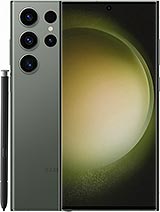
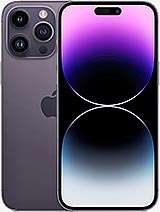
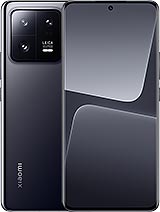


Galaxy S23 Ultra • Apple iPhone 14 Pro Max • Xiaomi 13 Pro • Oppo Find N2 Flip • Galaxy Z Flip4
We can't really endorse the idea of gray-importing and using a Xiaomi Mix Fold 2 or an Oppo Find N2 outside of China, wonderful options as they may be each in its own right. Perhaps you know what you're doing and can take that plunge, but from a simple user's perspective, that looks like too much of a risk and/or hassle.


Xiaomi Mix Fold 2 • Oppo Find N2
Verdict
There's a lot to like about the Magic Vs and a lot that you'd think Honor should have gotten right for its second-gen foldable, but it hasn't. Key among the missed opportunities is the lack of true camera functionality on the cover display in the unfolded state - this way the Magic sacrifices one of the major selling points of the form factor. Sure, the inherent advantages of a large display in a physically small device are there and productivity is reasonably well taken care of in the software, but we want our rear-camera selfies! The Galaxy is ahead here.
There are also a couple of features missing which are normally not to be expected from a handset of this kind, but the benchmark that the Honor is measuring up against has them, so they're hard to overlook. We get that Honor was going for lightest with the Magic Vs, but how much heavier would it have been with a wireless charging coil inside? Water resistance is probably tougher to achieve, likely more so from a warranty and after sales perspective than the actual sealing, but in the end the Honor isn't rated for it. The Galaxy covers both of these bases.

Honor's foldable does put up a strong performance on the fundamentals; there's no denying that. Its displays are hard to fault (the 90Hz refresh rate on the inside is a forgivable offense), and we'd argue they are superior from a usability standpoint than that benchmark we mentioned. Battery life is great in actual use, and even if that's not enough for you, the quick charging will have you up and running in no time. The cameras have their oddities, but save for less than stellar daylight video, they won't leave you wanting. None of these are areas that the Galaxy can claim easy victories in.
Of all the Galaxy comparisons going one way or the other, however, the Honor is losing the all-important one for overall value for money. It may sound like an outlandish concept for smartphones in the €1500 ballpark, but just because you clearly have a ton of money to drop on a smartphone, doesn't mean you don't want to get the most in return for it. Well, it's not the Magic Vs that will deliver that.
Pros
- Lightweight for its size.
- Thoroughly great displays (though inner one is 'just' 90Hz).
- Competitive battery life, fast charging.
- Snapdragon 8+ Gen 1 is still plenty powerful.
- Excellent all-round camera experience, great photo quality, top-notch video stabilization.
Cons
- No official IP rating (though it's admittedly only the Galaxies that have that).
- No wireless charging.
- The half-folded Magic Vs doesn't offer many smart software features, and the hinge is relatively unstable in intermediate positions.
- No camera UI on the cover screen in unfolded state severely limits usability of rear cameras.
- So-so video quality.
from GSMArena.com - Latest articles https://ift.tt/kTHpPnO
via IFTTT
Bagikan Berita Ini

















































0 Response to "Honor Magic Vs review"
Post a Comment